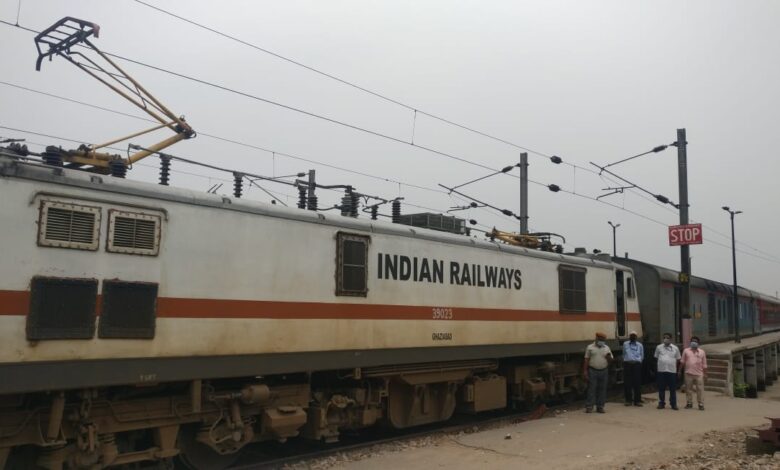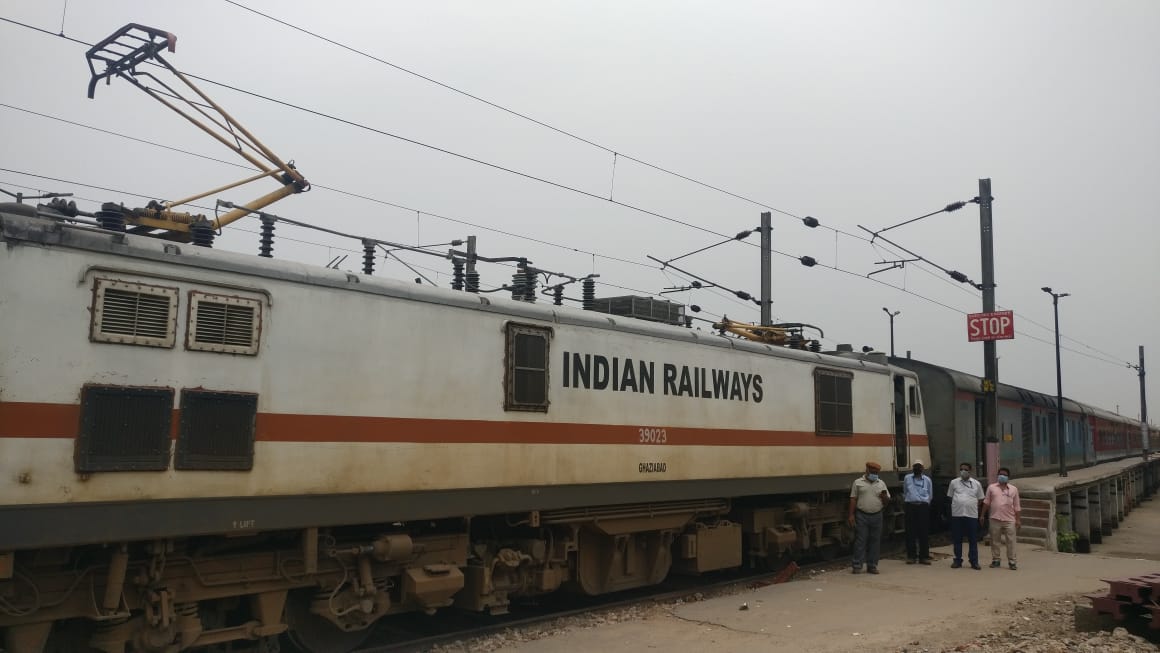Delhi Division of Northern Railway cuts energy bill by 75% in trains running on ‘Head on Generation’ system

Delhi Division of Northern Railway has achieved another unprecedented feat by converting and successfully running 44 trains having 54 rakes on the “Head On Generation” (HOG) system. The HOG technology has been introduced in all the trains fitted with LHB coaches and hauled by electric traction.
Delhi Division of Northern Railway in its effort to cut down on its energy bills as well as strengthening environment conservation has introduced the Head on Generation (HOG) technology. The power supply tapped from power lines through pantograph to the train engine is used to run the engine and haul the coaches. In this new system power supply tapped from overhead to the train engine will be distributed to the trailing coaches for power needs. The HOG technology has been introduced in all the trains fitted with LHB coaches and hauled by electric traction. This technology caters to the power of the coaches such as coach lighting, air conditioning, etc. is alternate of earlier technology having two power cars in the trains known as End on Generation (EOG).
This system is beneficial in many ways :
*Increase in revenue & reduction in operational cost:* Per unit cost of power in HOG system is only 25 % of EOG system. Hence, there is a saving of 75 % with HOG operation. Due to HOG system in 44 LHB trains, Delhi division is expected to save 12000KL HSD oil consumption annually.In HOG system one power car could be removed (keeping one power car for emergency purpose) and additional AC coach may be added with same formation of rake. This will generate additional revenue to Railway & facility for public.
*Environment friendly:* In EOG system there are two types of pollution-(i) Air pollution due to burn of High Speed Diesel, and (ii) Noise pollution by DA sets. HOG system is free from both type of pollution.
*Carbon Credits:* Delhi division is expected to reduce CO2 emission by 30,000 Ton annually through HOG system. Thus, carbon credits can be earned by not emitting the CO2 through burning of HSD oil into the environment.
*Better reliability:* HOG system is more reliable due to reduced number of generating equipment, low maintenance requirement, reduced dead weight compared to SG & EOG system.

During the lockdown period due to COVID Pandemic, Delhi division channelize its resources/energy for constructive & innovative works. A road map was prepared by Electrical Coaching team of Delhi division to address both the challenges. In the month of April/May 2020 (During Lock Down), Delhi division created facility for Primary maintenance with HOG system at washing/Sick lines at New Delhi, Anand Vihar & Nizamudin railway station. Delhi division is expected to save a revenue of Rs 20 Cr with this facility. Also, CO2 emission shall be further reduced by 10,000 metric ton annually to earn more carbon credits for Indian Railways. During the Lock Down period, technical team of Coaching department did the detail technical study for conversion of Garib Rath trains & Power Cars from EOG system to HOG system. Technical specifications, drawing & scheme of modification of Garib-Rath rakes was prepared by Delhi division and it was sent to RDSO for technical scrutiny & approval in 1st week of June 2020. Scheme, drawing & specifications as proposed by Delhi division was approved by RDSO on dated 22.06.2020.
S.C. Jain, Divisional Railway Manager, Delhi said that the this is expected to save around ₹ 65 Crores per annum on diesel consumption of generator cars with the introduction of HOG technology. He further said that Delhi Division has initiated process for modification work of 150 Coaches & 18 power cars of Garib Rath trains to operate these trains on HOG system. Approx expenditure on the modification work of Garib-Rath trains will be Rs 3.0 Cr. Delhi division is expected to save a revenue of Rs 12 Crore and reduction of 5000 ton CO2 emission in environment annually with HOG technology in Garib-Rath trains.




